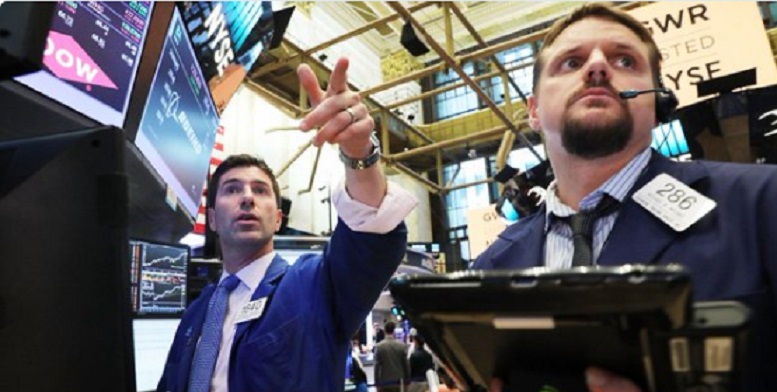
The Dow Jones Industrial Average (INDEXDJX:$.DJI) went above 22,000 for the first time ever on August 2, 2017 during early trading. The news made headlines everywhere, as investors and traders alike celebrated the milestone. The record was reached largely due to Apple’s stock (NASDAQ:$AAPL) increasing by a more than 4% rise after releasing a third-quarter report that went above and beyond expectations. As of 2:02 PM EDT on August 2, the Dow is trading at 22,002.47.
Brian White, an analyst at Drexel Hamilton, believes that Apple’s stock should see more success in the near future. “We believe investors will now feel more confident in owning the stock for the upcoming iPhone 8 cycle that is expected to begin this fall, while also benefiting from the company’s capital distribution initiative, attractive valuation and potential new innovations,” White said. If White’s expectations do come true, the Dow could see even more gains from Apple’s increases, as it is a price-weighted index. As of early trading session on Wednesday, August 2, Apple’s stock was the sixth-highest in the Dow when it came to price.
The Dow’s increase happened rather quickly. In just 107 trading days, the Dow went from 21,000 to the record-breaking 22,000. As such, it wasn’t just Apple that helped with the Dow’s rise. Boeing’s (NYSE:$BA) stock has impacted the Dow the most in terms of points, adding a total of 380.29 points since March 1. McDonald’s (NYSE:$MCD) and UnitedHealth Group (NYSE:$UNH) have also impacted the Dow quite a lot points-wise. McDonald’s contributed 171.14 points since March 1, while UnitedHealth threw in 166.35.
“We’ve come a long way in a very short period of time,” Brent Schutte, Northwestern Mutual Wealth Management’s chief investment strategist, noted. “I think people are now focusing on the macro news, especially on the jobs report.”
Other major indexes, like the Nasdaq Composite (INDEXNASDAQ:$.IXIC) and the S&P 500 (INDEXSP:$.INX) have also reached record highs this year thanks to strong quarterly reports across several companies. 72% of S&P companies that have already reported second-quarter earnings so far have surpassed bottom-line earnings expectations and 68% of the companies have surpassed top-line earnings expectations, according to Thomson Reuters I/B/E/S.
“It’s been a remarkable run as equity markets continue to defy expectations,” Mark Heppenstall, Penn Mutual Asset Management’s chief insights officer (CIO), said. “I’d say [the market] is going up for the right reason, which is earnings. That’s supportive of valuations.”
Other key economic data, like job growth, has also been improving. According to ADP and Moody’s Analytics, the U.S. added about 178,000 jobs in its private sector in July alone. However, economists surveyed by Reuters had an average expectation of an addition of 185,000 jobs.
“[A]t least according to ADP, job growth still remains good and certainly better than what the BLS has said. The BLS estimate for the private sector is 180k on Friday,” Peter Boockvar, The Lindsey Group’s chief market analyst, said. “Either way, job growth north of 150k is still enough to put continued downward pull on the unemployment rate and Friday’s estimate is for a one-tenth decline to 4.3%,which would match the lowest level since 2001 and more reason for [quantitative tightening] to start in September.”
Investors have been keeping up to date with the U.S.’s economic data in order to try and gauge whether or not the Federal Reserve will make its monetary policy more strict. Many believe that the Federal Reserve won’t raise interest rates until December at the very earliest.
U.S. Treasury saw a 10-year yield of almost 2.246% and a two-year yield of around 1.351% as of Wednesday, August 2.
Featured Image: twitter







